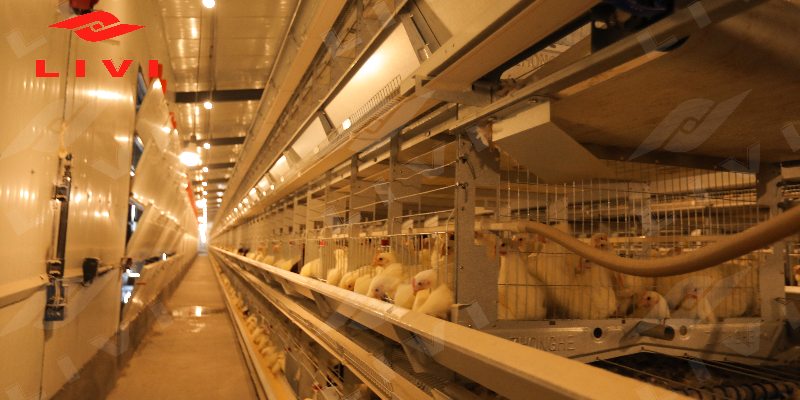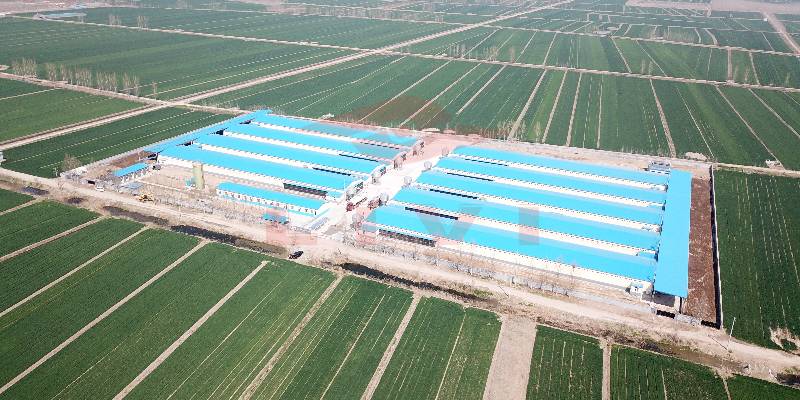
Poultry Farming Business Plan for Beginners in Afghanistan
Hey there! If you’re reading this, it’s likely because you’re interested in starting a poultry farming business in Afghanistan. Well, you’ve come to the right place! In this article, we’ll dive into creating a solid poultry farming business plan, focusing on layer cages and broiler cages—two essential elements of your operation. Let’s get started!
The Basics of Poultry Farming in Afghanistan
First things first: what exactly is poultry farming? Simply put, it’s raising domesticated birds like chickens, ducks, or turkeys for their meat or eggs. In Afghanistan, chickens are the most popular choice, offering two main avenues for profit: layers (for eggs) and broilers (for meat).
Now, if you’re looking to set up shop, you’ll want to consider a Poultry Farming Business Plan in Afghanistan—a roadmap that will guide you through this exciting adventure.
Why Poultry Farming?
You might be wondering why poultry farming is a great idea in Afghanistan. Well, here are some reasons:
- High Demand: There’s always a demand for chicken meat and eggs across the country.
- Quick Returns: Chickens grow quickly. You can start selling within weeks!
- Low Start-Up Costs: Compared to other livestock, starting a poultry farm doesn’t require a massive investment.
Now that we’ve got the basics down, let’s jump into crafting that business plan!
Creating Your Poultry Farming Business Plan
Step 1: Research and Planning
Before you dive headfirst into poultry farming, do your homework. This means understanding the market dynamics in Afghanistan. Here are some tips:
- Market Analysis: Look at how many people are buying chicken eggs and meat in your area. Talk to local vendors and consumers to gauge interest and pricing.
- Competition: Who else is in the game? Identify your competitors, assess their strengths and weaknesses, and think about how you can offer something unique.
- Regulations and Permits: You need to be aware of the legal requirements. Check with local authorities for any permits needed to start your poultry farm.
Step 2: Decide Between Layers and Broilers
Once you’ve gathered all that info, it’s time to decide whether you want to focus on layers, broilers, or even both!
Layer Cages in Afghanistan
If you’re leaning towards eggs, investing in layer cages in Afghanistan is your best bet. These cages allow you to maximize space and ensure your hens are comfortable while they lay eggs. It’s also easier to collect eggs daily, which is a huge plus.
Here’s what to consider when setting up layer cages:
- Space Requirements: Each hen needs about 4 square feet to thrive.
- Lighting and Ventilation: Good lighting encourages egg production. Make sure your setup has proper ventilation to keep your hens healthy.
- Feeding: A balanced diet is essential for layers. Lay feed should have higher calcium for egg production.
Broiler Cages in Afghanistan
On the flip side, if you’re more interested in meat, you’ll want to invest in broiler cages in Afghanistan. These cages are designed for the fast growth of your birds, allowing them to gain weight quickly.
Key points for setting up broiler cages:
- Stocking Density: You can house more birds in a smaller area, but be careful not to overcrowd them!
- Temperature Control: Broilers need warm environments, especially when they’re young. Consider heating options for the first few weeks.
- Nutrition: Focus on high-protein feed to promote fast and healthy growth.
Step 3: Financial Planning
Let’s talk money! No one wants to dive into a business without knowing about the costs involved. Here’s a breakdown of potential expenses you might encounter:
- Initial Setup Costs:
- Land purchase or rental
- Buying equipment (like layer and broiler cages)
- Infrastructure (buildings, ventilation systems, etc.)
- Operational Costs:
- Feed: This will be your biggest ongoing expense.
- Water and utilities
- Labor costs (if you hire help)
- Contingency Fund: Always have some extra cash set aside for unexpected expenses. Things happen, and being prepared is key!
Step 4: Marketing Your Poultry Business
Once you’ve got your operation up and running, it’s time to bring in the customers! Here are some marketing strategies to consider:
- Local Markets: Take your fresh produce directly to local markets. People love buying fresh eggs and chicken from local farmers.
- Online Presence: Utilize social media to showcase your products. Pictures of happy hens and fresh eggs can attract buyers!
- Word of Mouth: Never underestimate the power of good old-fashioned word-of-mouth marketing. Happy customers will spread the word about your farm.
Step 5: Managing Operations
Running a poultry farm isn’t just about sitting back and watching your chickens grow. It’s a hands-on business that requires careful management and attention to detail. Here’s a breakdown of how to keep things running smoothly:
Daily Care and Monitoring
Whether you’re raising layers or broilers, you’ll need to ensure your birds are well cared for every day. Here’s a quick list of daily tasks:
- Feeding: Make sure the birds are getting the right amount of feed. For layers, this could include laying feed with higher calcium content. For broilers, protein-rich feed will help them grow quickly.
- Water: Always check that your chickens have access to clean, fresh water.
- Health Checks: Look for signs of illness or distress. Early detection can save you a lot of trouble later.
- Cleaning: Hygiene is key in poultry farming. Regularly clean the cages, feeding areas, and the surrounding environment to reduce the risk of disease.
Weekly and Monthly Tasks
As your farm grows, you’ll need to stay on top of some additional tasks:
- Health Monitoring: Regular vaccinations are essential to prevent diseases that could spread rapidly in a poultry farm. Consult with a veterinarian to set up a vaccination schedule for your birds.
- Cage Maintenance: Make sure your layer cages in Afghanistan and broiler cages in Afghanistan are in good condition. Broken cages can harm the birds and reduce your productivity.
- Marketing and Sales: As your birds mature, you’ll need to plan your sales accordingly. Eggs are collected daily, while broilers may be sold after 6–8 weeks, depending on the market demand.
Key Considerations for Poultry Farming in Afghanistan
Starting a poultry farm in Afghanistan presents its unique set of challenges and opportunities. Here are some key considerations to keep in mind:
Climate and Environment
Afghanistan’s climate can be harsh, with extreme temperatures, especially in the winter months. Here’s what to keep in mind:
- Insulation: Ensure your chicken coops and cages are properly insulated. The cold can severely impact the health of your birds and their egg production.
- Ventilation: Proper airflow is crucial. In the hot summer months, your birds can get stressed without proper ventilation. Make sure your cages and farm buildings allow for plenty of air movement.
- Water Supply: In some areas of Afghanistan, access to clean water may be an issue. It’s essential to set up a reliable water source to ensure your chickens stay hydrated.
Supply Chain Issues
Getting the right equipment, feed, and even chicks might be tricky in Afghanistan, depending on where you’re located. It’s essential to work with trusted suppliers to ensure you’re getting quality products, such as layer cages and broiler cages.
If you’re importing poultry equipment like cages from international suppliers, consider working with companies that understand the local market and can offer after-sales support. Companies like Livi Machinery Equipment specialize in providing top-notch poultry equipment and can be a great partner in your poultry business journey.
Labor Considerations
Running a poultry farm can be labor-intensive, so having a reliable team is critical. Depending on the size of your operation, you might need to hire workers for tasks like feeding, cleaning, and collecting eggs. Make sure you train your team well to maintain high standards of care and productivity.
Tips for Success in Poultry Farming in Afghanistan
- Start Small, Scale Gradually: It’s tempting to jump into a large-scale operation right away, but starting small and expanding as you gain experience is often the smarter approach. This will give you a chance to learn the ropes and manage your risks better.
- Invest in Quality Equipment: Don’t cut corners when it comes to the equipment you use. High-quality layer cages and broiler cages will improve efficiency and bird health, leading to better profits down the line.
- Maintain Good Records: Track everything—expenses, feed consumption, egg production, bird health. This will help you identify trends, spot problems early, and optimize your operations.
- Stay Informed: Poultry farming is an evolving industry. Stay updated on best practices, disease prevention techniques, and new technologies. Joining farming groups or attending agricultural trade shows can be a great way to learn and network.
- Customer Relationships Matter: Building strong relationships with your buyers can give you a steady market for your products. Whether you’re selling eggs or chicken meat, reliable and consistent quality will help ensure customer loyalty.
Conclusion
Starting a poultry farm in Afghanistan can be a rewarding venture with the right approach, planning, and resources. Whether you choose to focus on layer farming for eggs or broiler farming for meat, the key to success is creating a solid Poultry Farming Business Plan in Afghanistan, investing in quality equipment like layer cages in Afghanistan or broiler cages in Afghanistan, and staying committed to the daily care of your birds.



